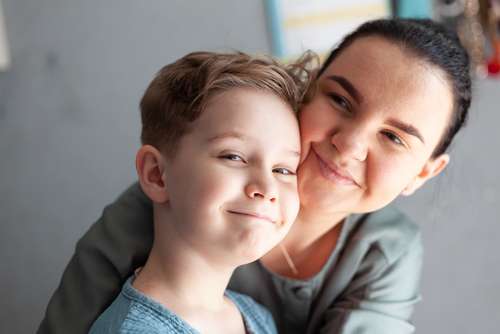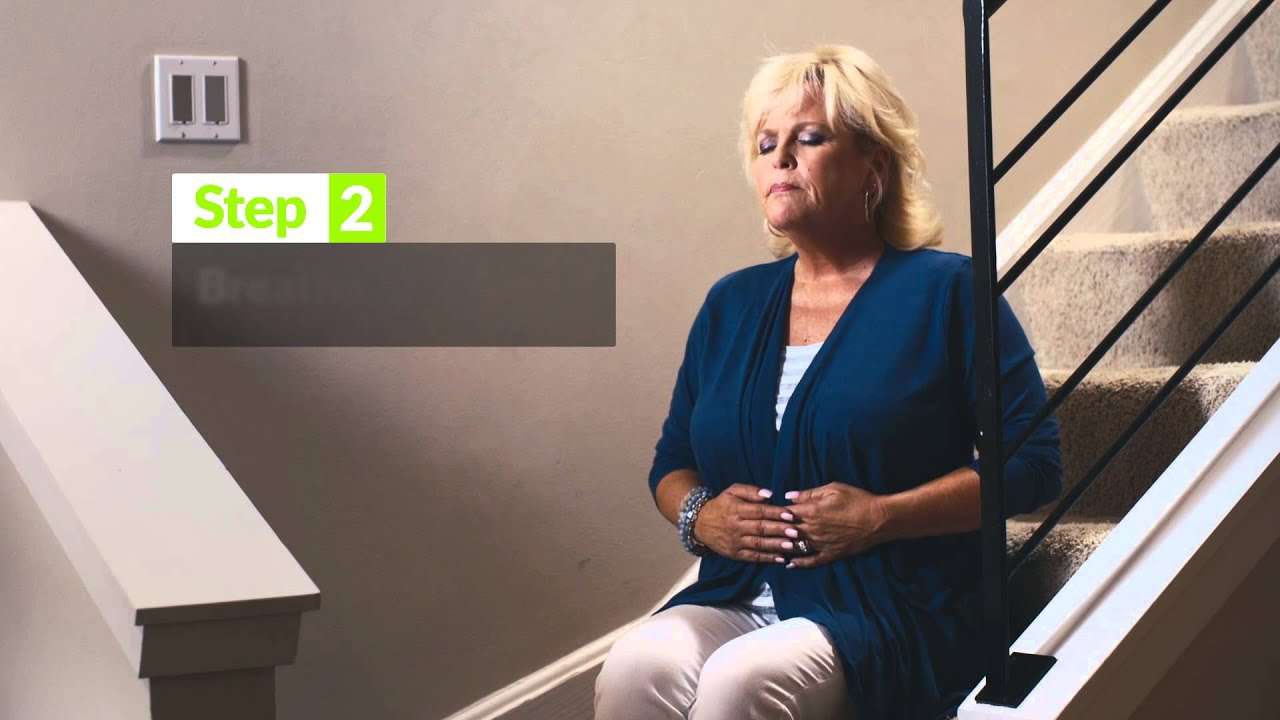
Autism is a disorder of brain development which mainly affects social behaviors and communication development. Therapists working with children with autism spectrum disorder often use behavior therapy as a means of treatment. The right autism behavioral therapy for each individual may include one or more of the following techniques.
Applied Behavior Analysis

One type of behavior therapy for autism is applied behavior analysis (ABA). ABA is used to help children succeed at reaching positive goals and distinguish negative behaviors. Optimally, a trained therapist would work one-on-one for 40 or more hours per week with a child when using ABA therapy. First, the child would be observed, and then, goals would be made. To carry out the program, an autism behavioral therapist would reward the behaviors that she wants the child to achieve while ignoring undesirable ones. It helps if a parent or caregiver learns ABA so a therapist does not need to spend as much time with the child and so the child can participate in real social situations. There are several different types of ABA techniques and therapies. We review some of the most popular including:
- Discrete Trial Training
- Pivotal Response Training
- Early Intensive Behavioral Intervention
- The Early State Denver Model
- Incidental Training
Discrete Trial Training
Discrete Trial Training (DTT) is a teaching strategy that falls under ABA. DTT is an ABA technique that breaks down skills into small steps. A therapist teaches one step at a time, rewarding the individual for correct responses. A discrete trial consists of four steps that include:
- Instruction- The instructor asks the individual to complete a task like touching their ear.
- A prompt- The instructor might point to the individual’s ear.
- A response- The individual touches their ear.
- A consequence- The instructor gives a compliment to the individual for touching their ear.
- A pause- The instructor waits a few seconds before beginning the next trial.
DTT works well in teaching children with autism spectrum disorders more complex skills like getting dressed or making a simple meal.
Pivotal Response Training (PRT)
Pivotal Response Training (PRT) is a play-based therapy that follows the principles of ABA. PRT therapy is initiated by the child. The therapy focuses on pivotal areas of a child’s development including:
- Motivation
- Self-management
- Social interactions
- Response to multiple cues
In Pivotal Response Treatment, if a child tries to request a favorite toy, they are rewarded with that toy rather than an unrelated reward. The reward comes from making a meaningful attempt. PRT may be offered by psychologists or special education teachers. Some speech and language therapy professionals also use PRT with children with autism spectrum disorder to help with communication.
The Early Start Denver Model (ESDM)
The Early Start Denver Model (ESDM) is another ABA approach. It can be used with very young children on the autism spectrum from 12 months to four years of age. ESDM is used to help children make progress in several key areas including:
- Social skills
- Language skills
- Cognitive skills
ESDM can be used in a therapy setting or at home or school. Parents play a key role in implementing ESDM. This model helps children with different learning styles and abilities. Studies have shown ESDM can improve brain activity related to communication and social skills.
Incidental Training
Incidental Training is like DTT except the training takes place outside a therapy office. Parents and teachers use organic opportunities to teach skills to a child with autism. Training might take place on the playground or at home around the dinner table. Parents can follow this reward and prompt approach in naturally occurring situations to promote motivation.
Early Intensive Behavioral Intervention (EIBI)
EIBI is an ABA therapy used with autistic preschoolers. It breaks down tasks into easy-to-manage steps using a reward system. Children can learn new skills and desired behavior that replace more challenging or inappropriate behaviors. Using EIBI, children can:
- Focus their attention longer
- Learn to imitate
- Improve language use and understanding
- Increase their daily living skills
EIBI takes a considerable time commitment to implement correctly. Children can receive therapy in a variety of settings including in a clinic or at school. Parents play a key role in EIBI and can implement EIBI at home with the child. Most therapists recommend spending 20 hours a week or more over the course of several years to get the most benefit.
Relationship Development Intervention
Another type of therapy for people with autism relationship development intervention (RDI). This relatively new behavior therapy focuses on social behaviors of the autistic child. The parents are more involved than a therapist when using RDI. After initial assessments are made by a professional, goals are set for the child. The parents attend an intensive workshop or watch a five-hour video to help them learn how to carry out the therapy. In addition, parents submit videos of themselves with the child to get feedback from the professionals who can give them advice for further treatments. RDI appears to work best when children are young, but there is hope for older children as well.
Sensory Integration Therapy

Another commonly used behavioral therapy for autism spectrum disorders is sensory integration therapy. This type of therapy works to improve a child’s sensitivities to sensory stimuli that may be overwhelming to the child. Loud noises, bright lights, and touches may all be addressed. A therapist using this type of therapy will introduce the child to increasingly higher levels of the stimuli being worked on. While the therapist does need to push the child’s limits, there is no force involved. Sensory integration therapy does not require a lot of time per session and positive results usually occur relatively quickly if this is going to work.
Communication Interventions

The fourth autism behavior therapy falls under communication interventions. There are a number of different models used, but all focus on a core deficit in many with autism: the lack of effective communication. Without effective communication, you will often see undesired behaviors out of frustration and misunderstandings about the situations. Teaching communication skills, whether they are verbal or by use assistant devices such as iPads, helps an individual express his needs and desires. Allowing this to happen in social situations makes it more meaningful to the child. Social learning can happen through:
- modeling
- peer tutoring
- games
Picture Exchange Communication System
One of the most popular communication strategies speech and occupational therapy professionals use when working with children on the autism spectrum is the Picture Exchange Communication System or PECS. PECS was developed in 1985 by Andy Bondy, PhD and Lori Frost, MS, CCC-SLP. The system consists of six phases:
- Learning how to communicate- In this step, the student begins to understand that the picture of the item represents the item itself. The student learns that if they pick up the picture of a specific object, they receive that object. This could be a picture of a favorite toy. At first, focus on only one picture at a time.
- Adding distance and persistence- The 2nd phase can only begin after the first phase is mastered. The student learns to use a communication book that contains the picture. They learn to select a picture of what they want and present it to a wider group of people to get the physical item. The goal is to get the child to spontaneously choose the picture and seek an individual who can fulfill their request.
- Picture discrimination- In phase 3, more pictures are added to the communication book. The student learns to discriminate between preferred and non-preferred pictures.
- Sentence Structure- Students start linking words and building sentences. They might choose a picture that represents “I want” and pair it with a chosen item. Therapists might have the child use a Velcro strip to attach the pictures. The student would take the Velcro strip with the sentence to the communication partner who can give them their item.
- Responding to a question asking what the student wants- Students learn more about reciprocal communication in this phase. The therapist would ask the student, “What do you want?” and the student would be able to decide using pictures from their communication book.
- In the final step, the student learns to respond to a variety of different questions in a more spontaneous way.
Alternative and Augmentative Communication (AAC)
Some children with autism spectrum disorder communicate in ways other than talking. AAC can be used throughout an individual’s life or for short time periods depending on their needs. There are both high-tech and low-tech AAC options in this type of speech therapy.
High-tech options might include:
- Using an iPad or tablet to communicate
- Using a device with a “voice”
Low-tech options might include:
- Writing
- Drawing
- Pointing to pictures or words
Each individual’s communication needs are unique, and a speech therapist can assist in finding the appropriate AAC (or combination of AACs) that will best facilitate communication.
Treatment and Education of Autistic and Related Communication Handicapped Children
The TEACCH model is used to help children with autism achieve positive results with their social and maladaptive behaviors. It uses an environment that is structured and organized at all times. In addition, activities are predictably sequenced and visually organized to enhance the environment for the child. Children proceed to practice activities and skills in a specific fashion. Outcomes are more positive when the parents are taught to use a similar method at home.
Related Resource: Top 10 Best Applied Behavior Analysis Online Programs
Overall, autism behavior therapies vary widely based on the needs of the individual. Different types of therapies work better for each person and finding the right protocol is the key to success.




